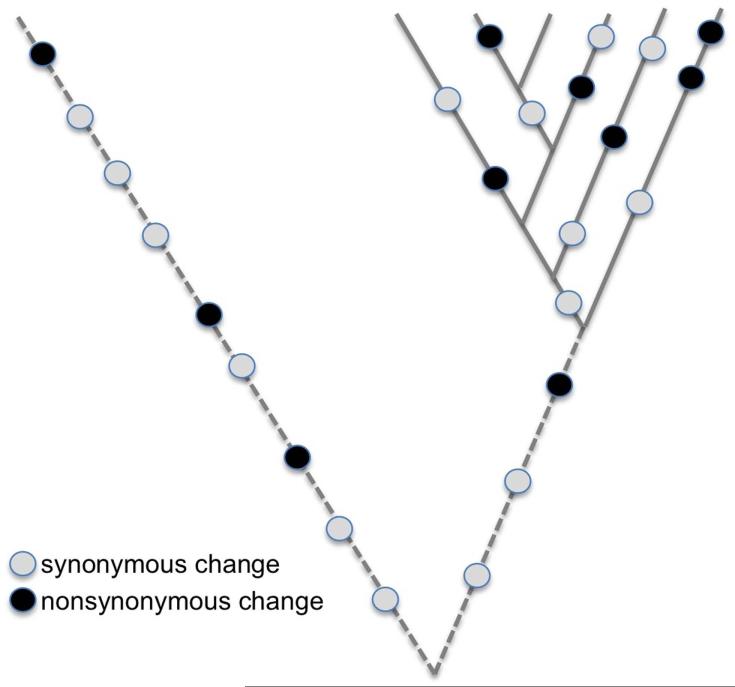Figure 2.
Schematic of intraspecific sampling to test neutrality. Many population genetic tests rely on sampling intraspecific polymorphisms (marked along solid lines), for comparison to patterns of interspecific substitutions (marked along dashed lines). Such tests often compare two categories of changes with distinct predicted fitness effects, such as nonsynonymous changes (which may be selected for or against) and synonymous changes (typically assumed to be effectively neutral). To test for subtle selection on nonsynonymous changes, nonsynonymous and synonymous polymorphisms and substitutions are compared. Under the null hypothesis that observed nonsynonymous changes are neutral, the ratio of nonsynonymous to synonymous polymorphisms within species (Pn/Ps) will equal the ratio of nonsynonymous to synonymous substitutions between species (Dn/Ds). If, however, nonsynonymous changes are slightly deleterious, then a portion of these changes will be eliminated by selection prior to being fixed between species, leading to a reduction in Dn/Ds when compared to Pn/Ps.137 This schematic figure reflects such a pattern (i.e., a dearth of nonsynonymous substitutions, or in other words, an excess of nonsynonymous polymorphisms). The neutrality index (NI) captures this “ratio of ratios,” by calculating (Pn/Ps)/(Dn/Ds).76 NI>1 indicates an excess of nonsynonymous polymorphisms compared to neutral expectations, consistent with nonsynonymous changes being slightly deleterious. Such results have suggested that nonsynonymous substitutions in endosymbionts are slightly deleterious, consistent with the hypothesis that genetic drift contributes to accelerated rates of protein evolution 37, 36.

